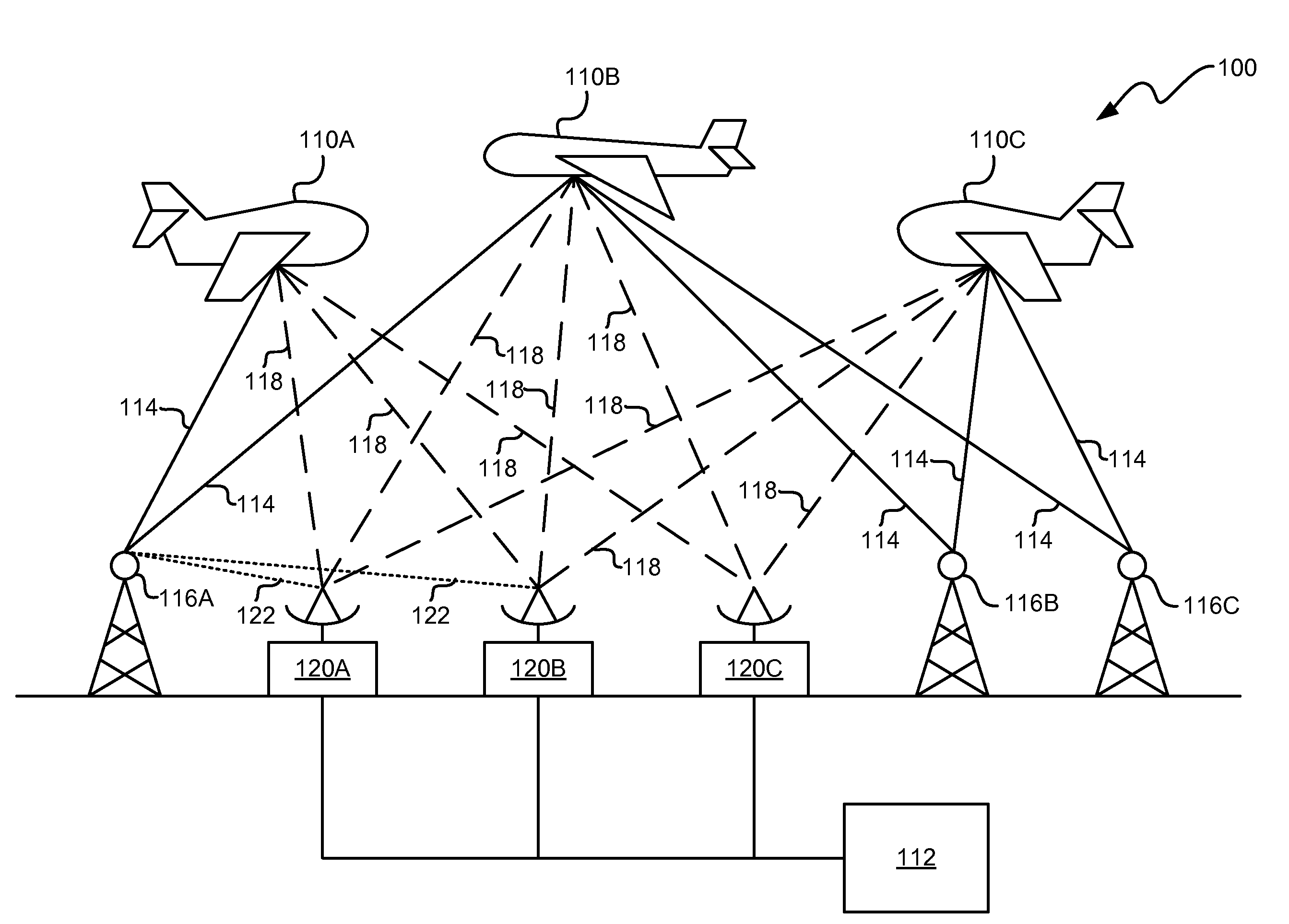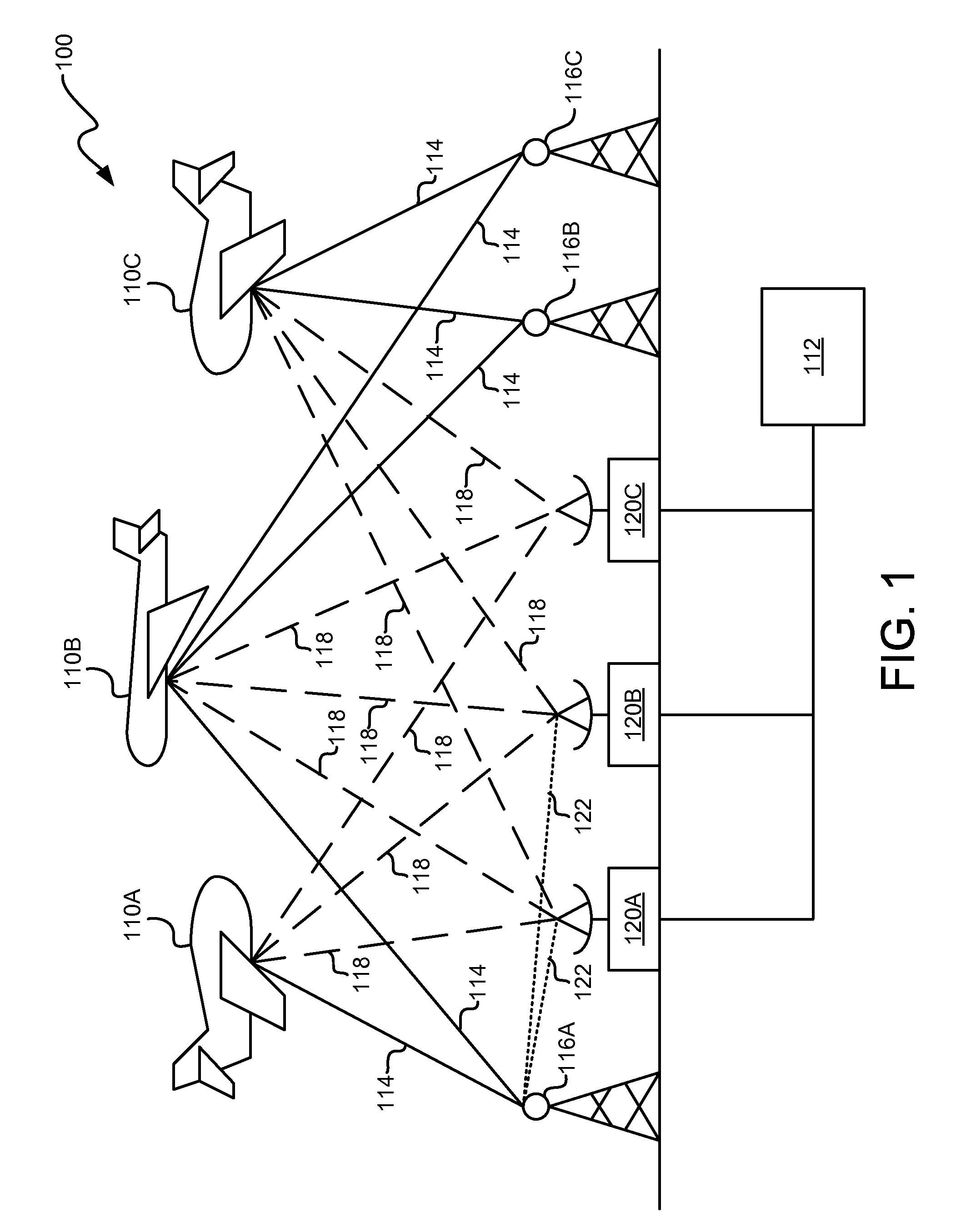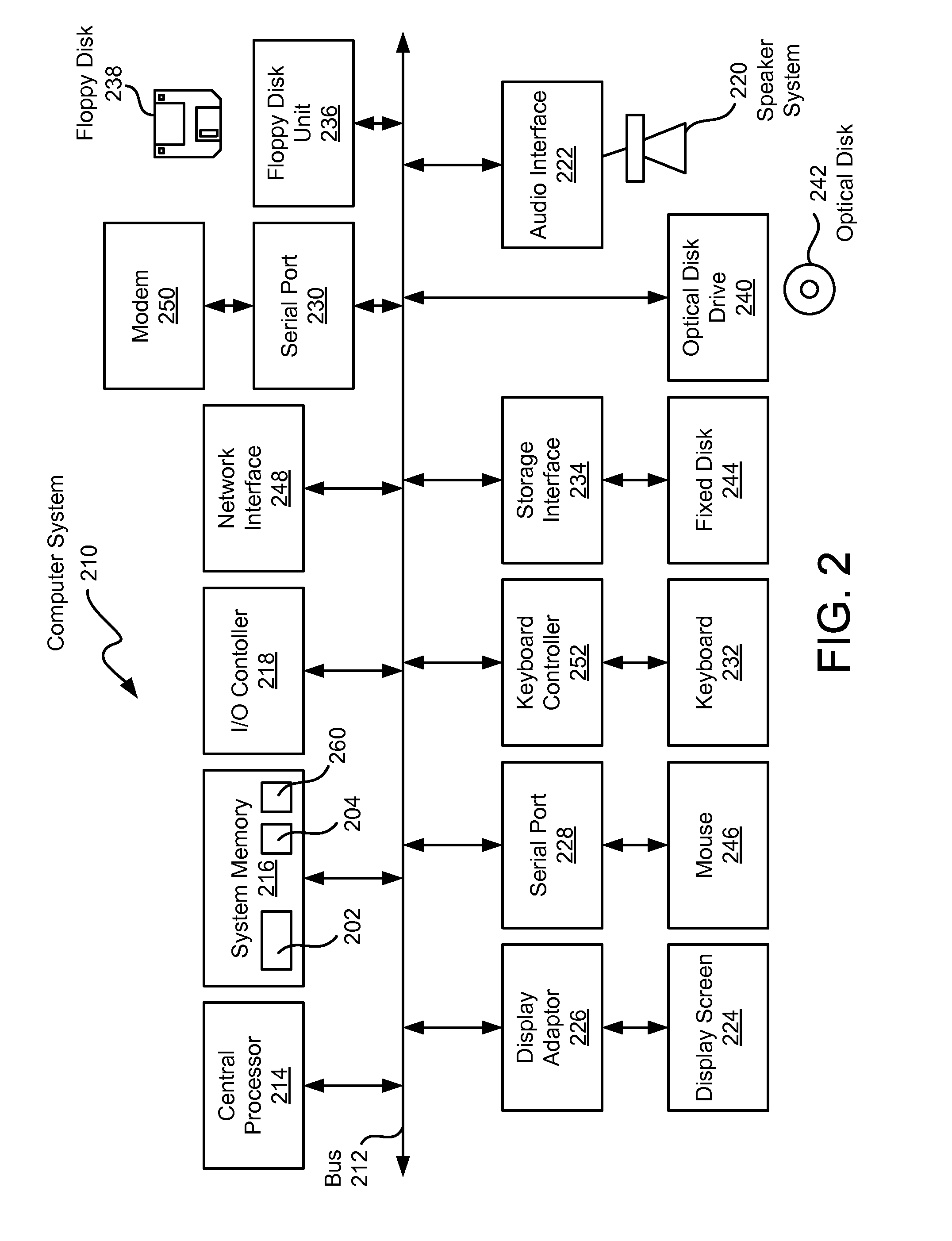Method and system for calculating elementary symmetric functions of subsets of a set
- Summary
- Abstract
- Description
- Claims
- Application Information
AI Technical Summary
Benefits of technology
Problems solved by technology
Method used
Image
Examples
Embodiment Construction
[0014]FIG. 1 provides an overview of one exemplary environment in which calculation of secondary symmetric functions may be employed. In this regard, the calculation of secondary symmetric functions may be employed within a CPHD tracking environment 100 wherein the position of one or more target objects 110A-110C are tracked using a CPHD multi-target tracker 112. The environment 100 depicted in FIG. 1 is not the only instance in which calculation of secondary symmetric functions may be employed, and the calculation of secondary symmetric functions may be useful in other environments.
[0015]In the CPHD tracking environment 100 of FIG. 1, signals 114 are transmitted from one or more transmitters 116A-116C and reflected from the one or more target objects 110A-110C thereby producing one or more target reflected signals 118. One or more of the target reflected signals 118 may be received by one or more signal detectors 120A-120C. The transmitters 116A-116C may be controlled transmitters ...
PUM
 Login to View More
Login to View More Abstract
Description
Claims
Application Information
 Login to View More
Login to View More - R&D
- Intellectual Property
- Life Sciences
- Materials
- Tech Scout
- Unparalleled Data Quality
- Higher Quality Content
- 60% Fewer Hallucinations
Browse by: Latest US Patents, China's latest patents, Technical Efficacy Thesaurus, Application Domain, Technology Topic, Popular Technical Reports.
© 2025 PatSnap. All rights reserved.Legal|Privacy policy|Modern Slavery Act Transparency Statement|Sitemap|About US| Contact US: help@patsnap.com



